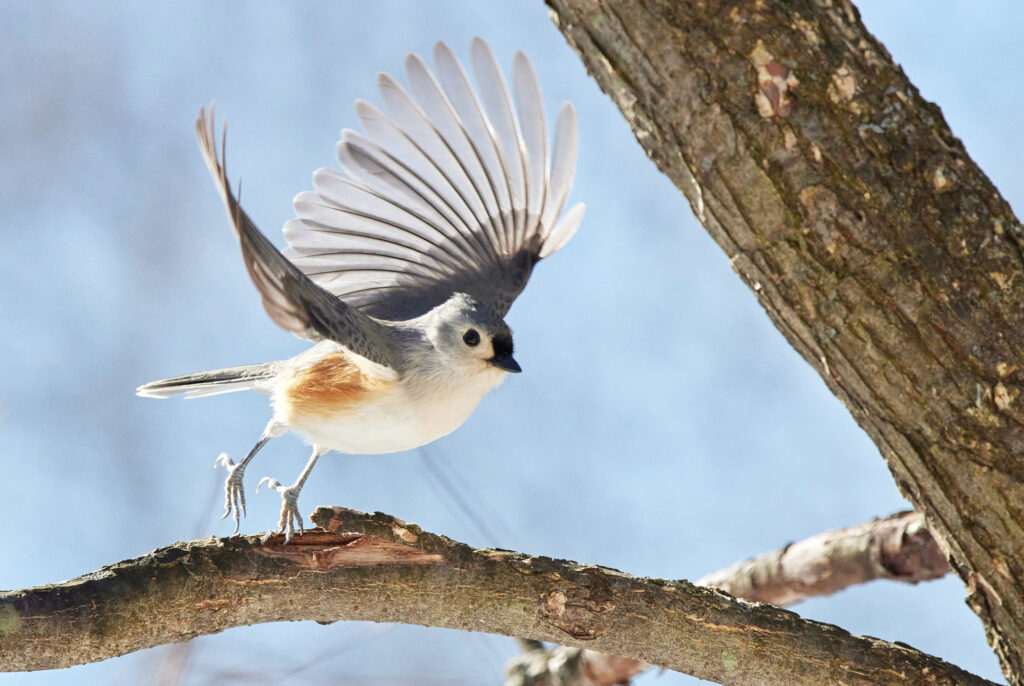TUFTED TITMOUSE, RANGE, HABITAT, SOUND, MIGRATION, VIDEO, FACTS, DIET
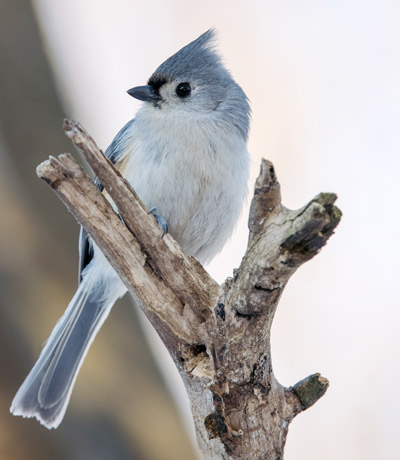
The Tufted Titmouse (Baeolophus bicolor) is a small, attractive bird that is a common resident of deciduous forests in the east of North America. They are known for their distinctive crest of grey feathers on their head, as well as their bright white cheeks and striking grey plumage.
DIET
Titmice are active birds, often seen flitting through the trees in search of food. They are omnivorous and will eat a variety of foods, including seeds, fruits, insects, and suet. They are also known to visit bird feeders, especially those that offer sunflower seeds.
REPRODUCTION
They form monogamous pair bonds during the breeding season, and both sexes participate in building their nest, which is typically made of twigs and moss, and lined with hair or fur. The female lays 4-6 eggs, which both parents take turns incubating. The young hatch after about two weeks and fledge in another two weeks.
In the non-breeding season, these birds often form large flocks, typically consisting of titmice and chickadees, as well as nuthatches and creepers. These flocks forage together, moving through the trees in search of food.
EXPANSION
This bird is a year-round resident in the eastern U.S. and some populations extend to the west. Their population and range have expanded in recent decades, partly due to human activity such as the widespread planting of suburban and ornamental trees.
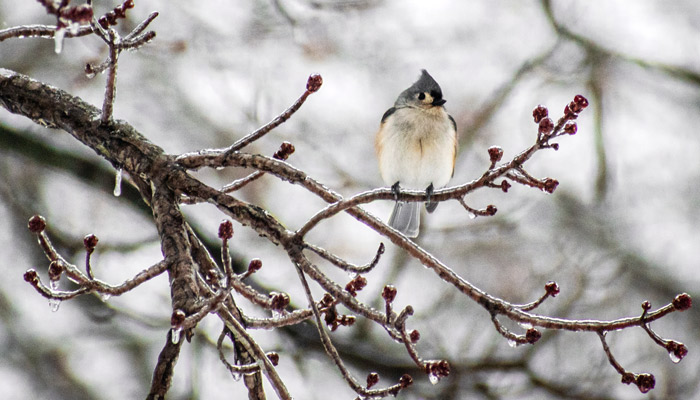
BACKYARD BIRD
It is a popular bird for backyard birdwatching, not only for its striking appearance but also for its lively behavior and vocalizations.
SOUND
Their calls consist of clear, ringing whistles, which they use to communicate with each other both in the breeding and non-breeding seasons. One of their most frequently heard calls is a loud “peter-peter-peter” which they use as a contact call among flock members or when excited. They also have a variety of songs, which are often heard during the breeding season and are used by males to defend their territory and attract a mate.
IMPORTANT ROLE
In addition to their visual and vocal appeal, the Tufted Titmouse also plays an important role in their ecosystem by serving as seed dispersers and eating various insects, including those that are considered pests.
However, like many bird species, their populations have been impacted by habitat loss and fragmentation, which have reduced the availability of natural nesting and foraging sites.
CONSERVATION
Despite these challenges, the Tufted Titmouse continues to thrive in many areas, thanks partly to conservation efforts and the increased popularity of backyard bird feeding and habitat enhancement.
Providing bird feeders and nest boxes, or maintaining natural landscape elements such as trees, shrubs, and brush piles can attract and support these birds in urban and suburban areas.

ADAPTATION
The Tufted Titmouse is also known for its ability to adapt to different environments, which has allowed it to expand its range over the years. They are often seen in suburban and urban areas and can use nest boxes and bird feeders provided by humans.
They are also known to take advantage of other human-made structures such as lamp posts and may even nest in houses and buildings. This adaptability has allowed them to thrive in areas where natural habitats have been lost or degraded.
HABITAT
It’s important to note that despite this adaptability, they still need natural habitats to survive in the long term. The Tufted Titmouse and other bird species still rely on natural woodlands, forest edges, and hedgerows for nesting, foraging and migration. Preserving and restoring these habitats is crucial for their survival and for the biodiversity of the entire ecosystem.
In recent years, there has been a growing interest in citizen science projects that allow people to participate in monitoring and collecting data on bird populations, including the Tufted Titmouse.
Programs such as the Christmas Bird Count and the North American Breeding Bird Survey provide valuable information about population trends and distribution, which can inform conservation efforts.

BEHAVIOR
It’s worth noting that the Tufted Titmouse is also known for its ability to cache food, a behavior that is seen in some bird and mammal species. They can store food items, such as seeds and acorns, in small crevices and nooks, which they can retrieve later when food is scarce.
This behavior allows them to survive through the winter and through periods of low food availability. It also means that they play a role in helping to disperse plant species that produce seeds, and other food sources.
CURIOUS BIRD
Additionally, the Tufted Titmouse is known for its boldness and curiosity, which can sometimes lead to them getting into trouble. They have been known to investigate various man-made objects and even steal small shiny objects and carry them around.
This behaviour can be amusing to observe, but it’s important to remember that it is best not to feed them human food or leave small objects lying around as it can be harmful to the bird.
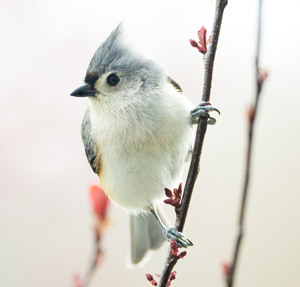
CLIMATE CHANGE
In recent years, scientists have also studied the effect of climate change on the Tufted Titmouse. Studies have shown that the changing climate may affect the timing of their migration, breeding, and moulting. It may also lead to changes in the distribution and abundance of their food sources.
As climate change continues to affect the environment, it’s important to monitor the population and distribution of the Tufted Titmouse and other bird species, to understand the impact and take appropriate conservation actions.
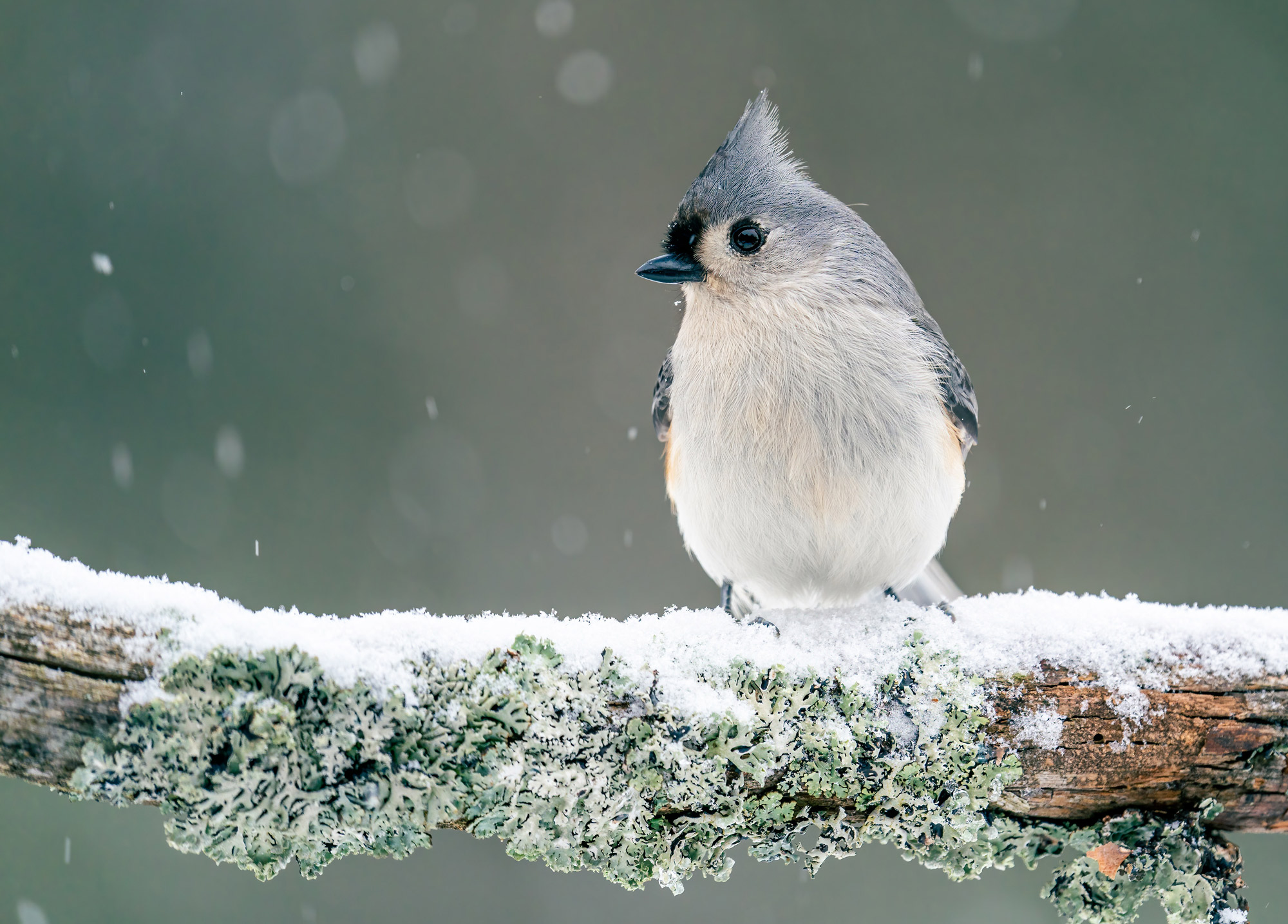
ECOLOGIC
Besides its ecological importance, the Tufted Titmouse is also culturally and historically significant. Native American tribes have held these birds in high regard, and have used their feathers in ceremonial dress, as well as in traditional medicine. Early American settlers also admired the Tufted Titmouse, and it has been featured in literature and art for centuries.
This bird is often considered an indicator species, which can provide insight into the overall health of an ecosystem. Their presence or absence in an area can indicate the presence or absence of other native bird species and can provide information about the quality of the habitat.
COMPLEX ABILITIES
Furthermore, the Tufted Titmouse is an important subject in ornithological research. There are many ongoing studies on their behavior, ecology, and physiology. Recent research has shown that the Tufted Titmouse is capable of complex cognitive abilities, such as problem-solving and memory. They are also capable of vocal mimicry and have been known to learn the calls of other bird species.
In conclusion, Tufted Titmouse is a small but mighty bird that plays an important role in the ecosystem, in addition to being culturally and historically significant. Its adaptability and ability to thrive in a variety of environments have allowed it to expand its range over the years, but this also makes it more vulnerable to human-induced changes to the environment. It’s important to be aware of the impact of human activities on their habitat and population and to take action to conserve and protect the habitats to ensure their survival. The Tufted Titmouse is not just a backyard visitor but a part of the web of life and is worthy of our protection.
WANT TO LEARN MORE? TAKE A LOOK AT THESE ARTICLES:
- The Scarlet Macaw
- The Scarlet Ibis
- Lovebirds
- The Female Cardinal
- The Great Egret
- The Great Blue Heron
- The American Robin
- The Northern Cardinal
- The Dark-Eyed Junco
- The Blue Jay
- The Gray Catbird
- The Tufted Titmouse
- The Red-winged Blackbird
- The Black-capped Chickadee
- The Evening Grosbeak
- The Common Starling
- The Kiwi Bird
- Wild Birds Unlimited

